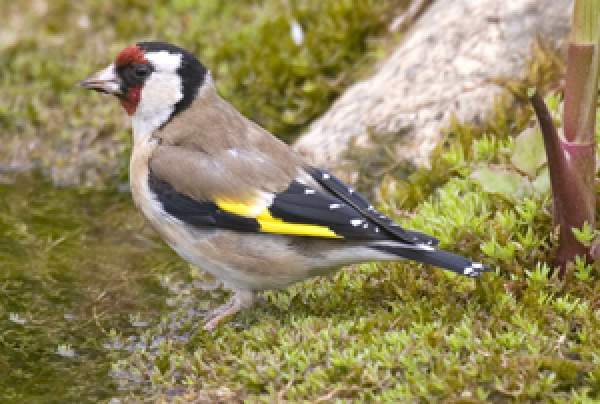Goldfinch

Carduelis carduelis
The black wings, with their broad band of bright yellow, and the black tail with its white terminal spots, are distinctive in all ages of Goldfinch (the sexes are alike, or nearly so). In adult birds, the striking head pattern of red, white and black is equally characteristic (in juveniles, this is absent). In size, the Goldfinch is smaller than a Greenfinch, delicate in appearance with a noticeably pointed bill.
Goldfinch calls are a beautiful series of notes and an equally wonderful song. Both are liquid in nature, with a real fluidity to the constantly uttered ‘tswitt-witt-witt'.
The Goldfinch population has spread northwards within Britain and the species is now absent only from open mountains and moorland (it prefers low ground). Widespread persecution up until the 1930s almost certainly kept the population below what it could achieve. This distribution appears to reflect the distribution of its favoured food species, since the Goldfinch specialises on seeds of the family Compositae (groundsels, ragworts, dandelions & thistles).
Goldfinches have increased their use of gardens quite dramatically over recent decades, exploiting new foods like Nyjer seed and Sunflower hearts.
Goldfinches appear to nest in areas with scattered trees and shrubs (including gardens) where they often adopt the loose colony structure seen in other cardueline finches. The nest itself is neatly constructed from grasses, moss, roots and lichens, interwoven with wool and hair. This is usually positioned some way off the ground, though may be positioned in hedges and evergreens. The cup of the nest is quite deep relative to its width.
Ring-recoveries suggest that during the autumn many Goldfinches in Britain migrate south, some reaching Continental Europe and Iberia.
Find out more about Goldfinches on BirdFacts and the Wider Countryside Report.






Share this page